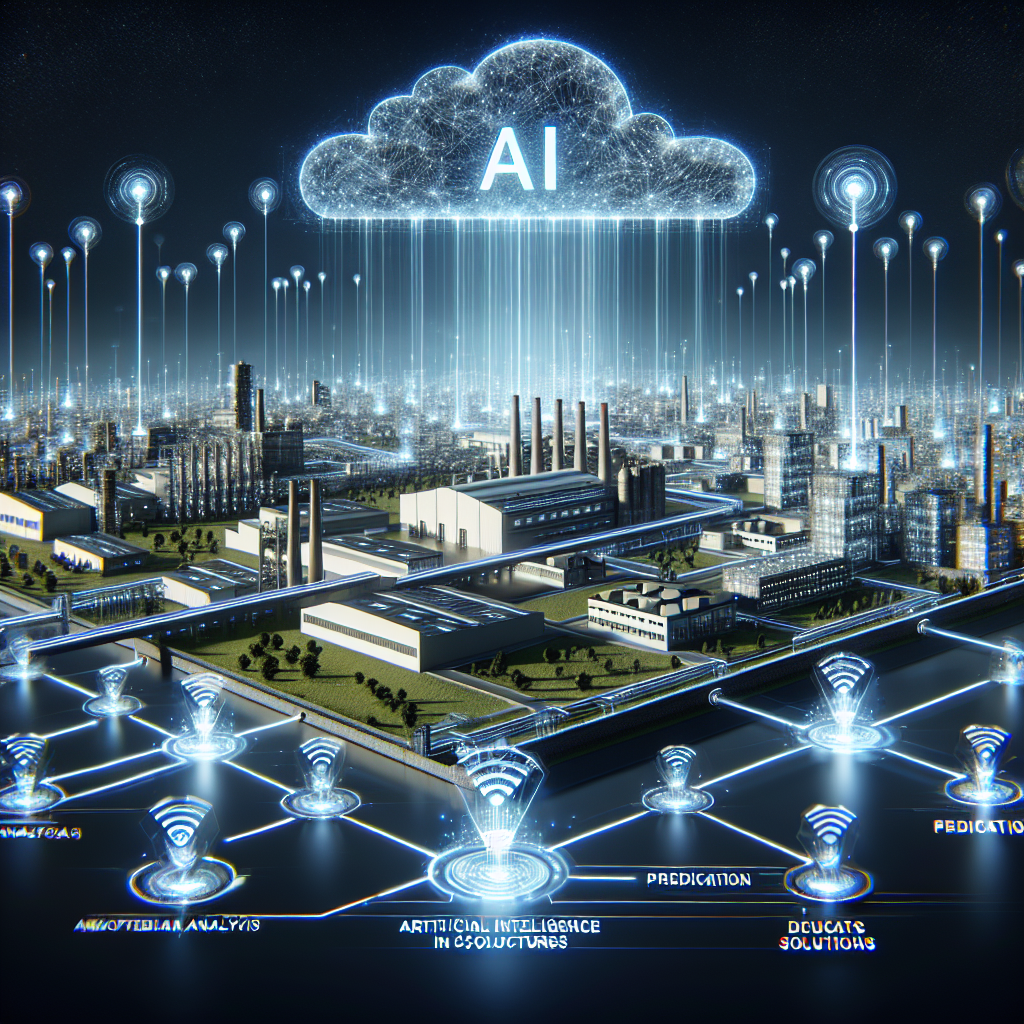Artificial intelligence (AI) is revolutionizing the manufacturing industry in various ways, and one of the key areas where it is making a significant impact is in demand sensing. Demand sensing refers to the ability to accurately predict customer demand for products in real-time, allowing manufacturers to optimize their production processes and inventory levels. By leveraging AI-powered demand sensing, manufacturers can better respond to market changes, reduce lead times, and improve customer satisfaction. In this article, we will explore the concept of AI-powered demand sensing in manufacturing, its benefits, and how it is transforming the industry.
What is AI-powered Demand Sensing?
AI-powered demand sensing is a technology-driven approach to demand forecasting that uses advanced algorithms and machine learning techniques to analyze large volumes of data in real-time. This includes historical sales data, market trends, social media sentiment, and other relevant factors to predict future demand accurately. By continuously analyzing and learning from new data, AI-powered demand sensing can provide manufacturers with up-to-date and accurate demand forecasts, enabling them to make informed decisions about production, inventory levels, and supply chain management.
Benefits of AI-powered Demand Sensing in Manufacturing
There are several key benefits of implementing AI-powered demand sensing in manufacturing, including:
1. Improved Forecasting Accuracy: Traditional demand forecasting methods often rely on historical sales data and assumptions, which may not capture the complex and dynamic nature of today’s markets. AI-powered demand sensing can analyze real-time data from multiple sources to provide more accurate and timely demand forecasts, reducing forecasting errors and improving inventory management.
2. Faster Response to Market Changes: With AI-powered demand sensing, manufacturers can quickly identify changes in customer demand patterns and adjust their production schedules and inventory levels accordingly. This agility allows manufacturers to respond more effectively to market dynamics, such as seasonality, promotions, or sudden shifts in consumer preferences.
3. Reduced Lead Times: By accurately predicting demand and optimizing production schedules, manufacturers can reduce lead times and improve production efficiency. This can help manufacturers meet customer expectations for faster delivery times and reduce the risk of stockouts or excess inventory.
4. Enhanced Customer Satisfaction: By aligning production with customer demand, manufacturers can improve product availability and delivery times, leading to higher customer satisfaction and loyalty. AI-powered demand sensing can also help manufacturers anticipate customer needs and preferences, enabling them to introduce new products or services to meet market demand.
How AI-powered Demand Sensing Works
AI-powered demand sensing works by analyzing a wide range of data sources to predict future demand accurately. This process typically involves the following steps:
1. Data Collection: AI-powered demand sensing collects data from various sources, such as sales transactions, market trends, weather conditions, social media, and competitor activities. This data is then aggregated and cleaned to remove any inconsistencies or errors.
2. Data Analysis: The cleaned data is analyzed using advanced algorithms and machine learning techniques to identify patterns, trends, and correlations that can help predict future demand. These algorithms can learn from new data and continuously improve their forecasting accuracy over time.
3. Demand Forecasting: Based on the analysis of historical data and market trends, AI-powered demand sensing generates demand forecasts for specific products or product categories. These forecasts can be adjusted in real-time based on new data inputs or changes in market conditions.
4. Decision Making: Manufacturers can use the demand forecasts generated by AI-powered demand sensing to make informed decisions about production scheduling, inventory management, and supply chain optimization. By aligning production with customer demand, manufacturers can improve efficiency and profitability.
Frequently Asked Questions about AI-powered Demand Sensing in Manufacturing
Q: What are the key challenges of implementing AI-powered demand sensing in manufacturing?
A: One of the key challenges of implementing AI-powered demand sensing in manufacturing is the availability and quality of data. Manufacturers need access to large volumes of accurate and relevant data to train AI algorithms effectively. Additionally, integrating AI-powered demand sensing into existing systems and processes may require significant investments in technology and training.
Q: How can manufacturers ensure the accuracy of demand forecasts generated by AI-powered demand sensing?
A: Manufacturers can improve the accuracy of demand forecasts generated by AI-powered demand sensing by continuously monitoring and validating the forecasts against actual sales data. By comparing forecasted demand with actual demand, manufacturers can identify and address any discrepancies or errors in the forecasting process.
Q: What are some best practices for implementing AI-powered demand sensing in manufacturing?
A: Some best practices for implementing AI-powered demand sensing in manufacturing include:
– Establish clear goals and objectives for demand sensing
– Invest in technology and tools that support AI-powered demand sensing
– Ensure data quality and availability
– Train employees on how to use AI-powered demand sensing tools effectively
– Monitor and evaluate the performance of demand sensing models regularly
Q: How can AI-powered demand sensing help manufacturers optimize their supply chain?
A: AI-powered demand sensing can help manufacturers optimize their supply chain by providing accurate and timely demand forecasts. By aligning production and inventory levels with customer demand, manufacturers can reduce inventory carrying costs, minimize stockouts, and improve overall supply chain efficiency.
In conclusion, AI-powered demand sensing is transforming the manufacturing industry by enabling manufacturers to accurately predict customer demand in real-time and optimize their production processes accordingly. By leveraging advanced algorithms and machine learning techniques, manufacturers can improve forecasting accuracy, reduce lead times, and enhance customer satisfaction. As AI technology continues to evolve, demand sensing will play an increasingly critical role in helping manufacturers stay competitive in today’s fast-paced and dynamic markets.

